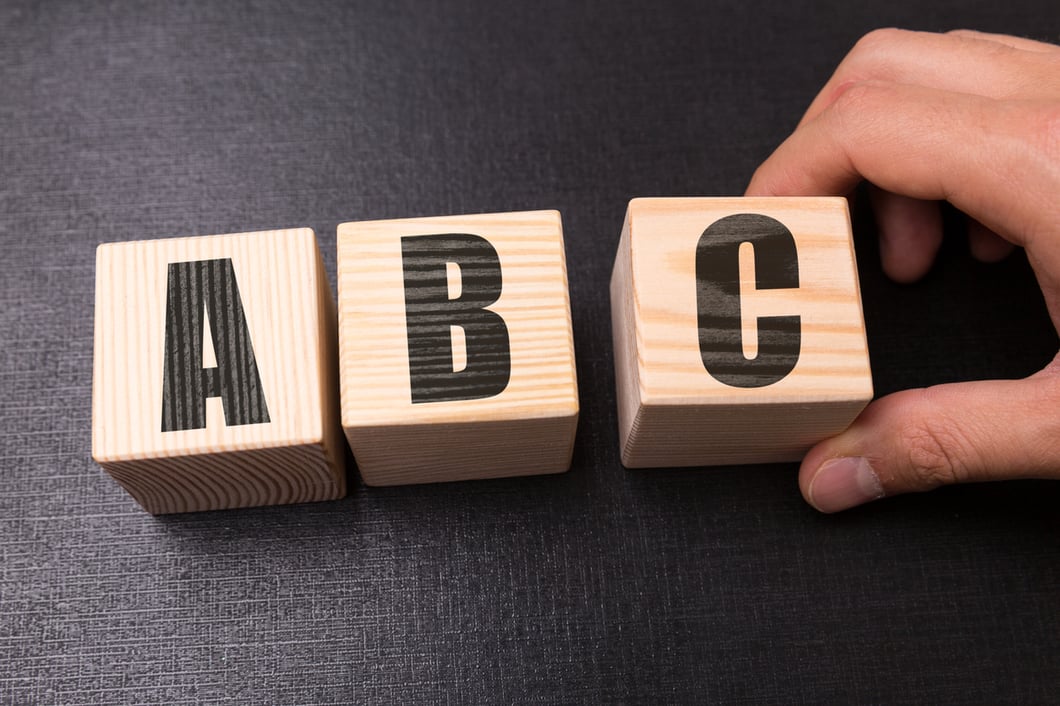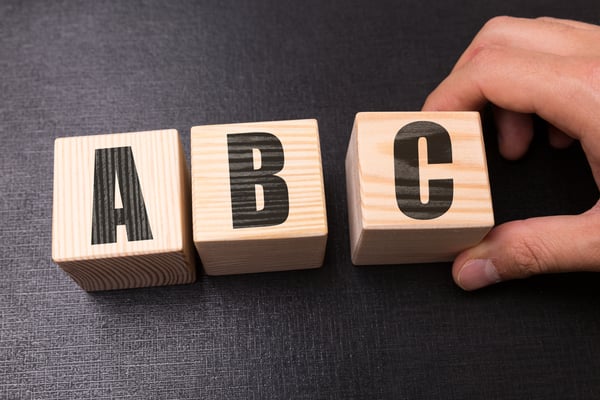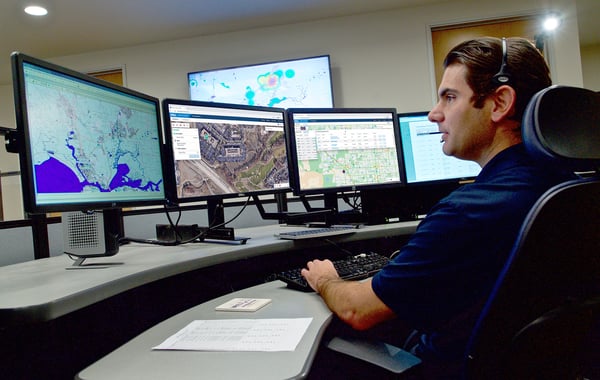Your Agency Isn’t Getting Paid: Here’s What You Can Do
The Key Skill Missing in EMS A-B-C Techniques
Whether you use A-B-C or C-A-B (2010 proposed AHA Guidelines for adult BLS), the outstanding technical skills of first responders (EMTs, Paramedics, Police, Firemen, etc
Was this information valuable?

Whether you use A-B-C or C-A-B (2010 proposed AHA Guidelines for adult BLS), the outstanding technical skills of first responders (EMTs, Paramedics, Police, Firemen, etc.) giving their attention to Airway, Breathing and Compressions has greatly outpaced the development of their communication skills.
So, let’s raise the bar from A-B-C to A-B-C2. A-B-C2 means giving critical attention to communication skills as well.

This is important because:
- Research shows “that between 44,000 and 98,000 people die every year in U.S. hospitals because of medical errors. Even more disturbing, communication failures are the leading root cause of the sentinel events [deaths] reported to the Joint Commission from 1995 to 2004.”
- According to Huntington and Kuhn, the “root cause of malpractice claims is a breakdown in communication between physician and patient."
- "In the acute care setting, communication failures lead to increases in patient harm, length of stay, and resource use, as well as more intense caregiver dissatisfaction and more rapid turnover."
-Catherine Dingley RN, PhD, FNP; Kay Daugherty RN, PhD; Mary K. Derieg RN, DNP; Rebecca Persing, RN, DNP
This is also important because of many personal experiences. Here is an example:
After responding to a call and preparing the patient with an injured right leg (ultimately diagnosed as ruptured quad) for transport, the EMT in the back said “Mr. Mahar, what is your pain level now?”
Patient response: “9.”
EMT’s reply: “You seem to be in more pain than that. Wouldn’t you say it is a 10.”
Patient response: “No, I can honestly say this is definitely a 9.”
EMT’s reply: “We have transported a lot of people who said they were at 10 and you appear to be in worse pain than most of them.”
Patient response: “I have had kidney stones. Kidney stones are my benchmark as a 10. This is a 9.”
We believe the EMT’s communication effectiveness can be enhanced by first reflecting on the goal of speaking (intended outcome or impact on the other person—patient, colleague, physician, etc.) before speaking. Next, we need to monitor the patient’s responses as clues to our success or failure accomplishing the communication goals.

The EMT’s goal is paramount.
In this example, the EMT’s initial goal appears to have been recording the patient’s pain level. Such a goal falls short of more effective communication goals.
A communication goal is one that answers this question:
What kind of dialogue will enable the patient to feel respected, feel engaged, feel appreciative, and feel open enough to potentially volunteer information which may be useful to the EMT?
Let’s apply this to the above dialogue:
|
What was said? |
Potential Goals |
|
“Mr. Mahar, what is your pain level now?”
|
EMT’s goal appears to have been to obtain information to fill out a form.
A communication goal is best expressed from the patient’s point of view rather than from the EMT’s intentions.
EMT’s goal could have been for the patient to feel engaged, appreciated, and motivated to provide thorough responses to EMT’s questions. |
|
Patient response: “9.” |
|
|
EMT’s reply: “You seem to be in more pain than that. Wouldn’t you say it is a 10?” |
EMT’s new goal appears to be to reconcile his/her extensive personal experiences which suggest the patient may have underreported the pain level.
A communication goal is best expressed in terms of the outcome we achieve from the interchange, not our internal, unexpressed goals for ourselves.
EMT’s goal could have been for the patient to want to share additional background or context about what contributed to giving an answer of “9.”
If this were the new communication goal, the EMT could have said any of the following:
As originally expressed by the EMT, the impact of saying “You seem to be in more pain than that. Wouldn’t you say it is a 10?” is reflected in the following thoughts that the patient felt but did not express:
|
|
Patient response: “No, I can honestly say this is definitely a 9.” |
Patient’s communication goal is to end this conversation by being emphatic. Patient feels and may even look irritated at the EMT’s obsession with the pain number.
|
|
EMT’s reply: “We have transported a lot of people who said they were at 10 and you appear to be in worse pain than most of them.” |
EMT’s goal appears to be for the patient to feel respected offering a context for the concern about the pain number. EMT may have sensed the patient was becoming defensive or experiencing increased stress. EMT appeared to want the patient to feel the questions came from a place of care and were not intended to be argumentative.
|
|
Patient response: “I have had kidney stones. Kidney stones are my benchmark as a 10. This is a 9.”
|
In response to the previous EMT’s reply, the patient wanted to help the EMT solve this pain number mystery and volunteered the rationale for choosing 9. |
If the bolded EMT reply above had been expressed earlier, two things could have happened:
- This conversation would have been shorter.
- The credibility of the EMT would have been maintained throughout the dialogue.
It is not enough for EMTs to have a goal of explaining something, expressing themselves, or asking questions. Rather the goal needs to become “What outcome are we trying to accomplish in this conversation and how will we know we are making progress?” An effective communication goal is more than sending a message, it is knowing the message was received or caught by the other person!
- When we toss a ball, our goal is not just for us to throw the ball. Rather, it is for the receiver to catch the ball. After we throw it, we continue to pay attention to the receiver until it is caught.
- When we pass someone a pepper shaker, our goal is not to throw it to the receiver. Rather, the outcome we desire is for the receiver to grasp it—before we fully let go.
- When we speak (toss words into the air), most of us give our attention to what we say—our goal is typically to speak clearly and say it well. In truth, there is also an opportunity to envision a desired outcome (for the receiver to catch/grasp the meaning of what we say and be able to take appropriate follow-up actions).

4 examples of communication goals and ways to check for understanding by the receiver:
1. After the pain-level conversation, the EMT may want to provide information about what will happen at the hospital so that the patient can understand and follow. When explaining instructions to someone, watch them while you speak looking for any evidence of confusion or mind wandering. If this happens, stop talking and check to see what may be making it difficult for them to hear you. The communication goal cannot be to throw instructions at someone. We want the receiver of the instructions to be able to understand and act upon them. This means we must monitor if the receiver is “getting it.”
2. Confirm someone understands instructions. Prior to leaving Mr. Mahar’s home, where his entire family is present at the scene of the accident, the EMT wants to provide instructions for how they can join him at the hospital. These details include where to park, who to talk to when they arrive, and what documentation they need to bring.
One of the major communication challenges is that when asking “Do you understand?” at the end of a long list of instructions, people often give “yes” or “sure” responses. They usually are being respectful. However, these linguistic turn-taking cues have nothing to do with finding out if the person understands what you have said. To ensure grasping or understanding has taken place, we need to get the other person talking.
As the EMT listens to the answers to just one or two of the sample questions below, he/she will get a much clearer idea of whether or not the family members understand the instructions.
- “How long do you think it will take you to get to the hospital with the things I recommended you bring?”
- “When was the last time you went to this hospital?”
- “Which roads do you plan to take to get to the hospital?”
- “Please summarize the instructions so that I can see if I left anything out.”
3. Help a new team member improve. Perhaps the attending EMT in the back of the ambulance was new and the experienced EMT in the ambulance overheard him/her being argumentative with the patient. If the experienced EMT wants to be helpful to the new person, yelling, complaining, criticizing, and lecturing are of no value. Rather than ask “Do you understand where you went wrong here?” state “I need you to get better at observing patients while we are speaking with them. What did you notice about this patient’s words, gestures, and facial expressions that might provide insight into how he was perceiving you?”
4. Feel satisfied that I was clear. If we are not sure we have been clear, most of us repeat ourselves several times. However, repeating one’s self accomplishes nothing. Asking the other person to paraphrase, in their own words, is nearly always superior to repeating one’s self.
Conclusion:
When we are aware of our intended outcome and then express ourselves in ways that increase the receiver’s ability to grasp the full meaning of what we are trying to communicate, the dialogue changes for the better. Deciding upon a goal and checking for understanding can add 3 to 7 seconds to a conversation. You can ask yourself if this is worth it. Communication problems/mistakes can happen in a few seconds and then take hours to try to repair.
Please reflect on A-B-C2 and consider putting these ideas into your practice and sharing them with others. If we can raise the bar on our confidence that the other person has grasped what we said, we can add a higher quality of communication to our toolboxes. Improving communication benefits all of us.
For further reading:
DeVito, Joseph A., The Interpersonal Communication Book, 8th edition, Longman, 1998
Duhigg, Charles, The Power of Habit: Why We Do What We Do in Life and Business, Random House Trade Paperbacks, 2014
Frankl Victor E., Man’s Search for Meaning, Beacon Press, Boston, 2006
Gerzon, Mark, Leading Through Conflict: How Successful Leaders Transform Differences into Opportunities, Harvard Business School Press, 2006
Wohlauer, MD, Max V., Vineet M. Arora, MD, Leora I. Horwitz, MD, Ellen J. Bass, PhD, Sean E. Mahar, Ingrid Philibert, PhD, “The Patient Handoff: A Comprehensive Curricular Blueprint for Resident Education to Improve Continuity of Care,” Academic Medicine, 2012, April; 87(4): 411-418.
Related Posts
Meet the New ZOLL Dispatch and ZOLL Respond CAD Solution
Providers Can Even the Playing Field During Open Negotiations – Here’s How
ZOLL Pulse Blog
Subscribe to our blog and receive quality content that makes your job as an EMS & fire, hospital, or AR professional easier.
ZOLL Pulse Blog
Subscribe to our blog and receive quality content that makes your job as an EMS, fire, hospital, or AR professional easier.





